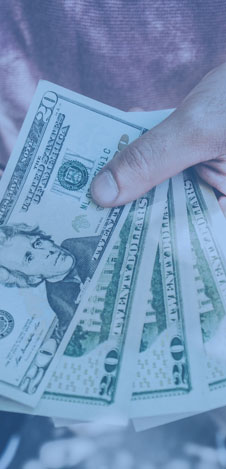Student Loan Changes — Act Now!
By Terry Savage on August 02, 2025
If you have outstanding student loans, you are likely about to encounter some significant and confusing changes. If you have participated in a plan to lower your payments or defer them based on income, you have a relatively short period to contact your loan servicer to make changes.
Nearly 8 million borrowers were enrolled in the now-cancelled SAVE (Saving on a Valuable Education) Plan. These borrowers had been placed in “administrative forbearance” — meaning payments were paused and no interest accrued — from July 1, 2024 until August 1, 2025, when interest started accruing again.
An additional 2 million student loan borrowers had pending applications for income-driven (IDR) repayment plans. They were also in forbearance while awaiting processing of their applications.
All of those borrowers will suddenly have to begin making monthly payments — and those payments will have a huge impact on the monthly budgets of nearly 10 million people. Not making the new, higher payments will create a huge increase in the debt outstanding as interest piles up.
Borrowers must act immediately to select one of the still-allowed income-driven repayment plans. That means contacting your servicer or an attorney or advocate familiar with student loan law to determine your eligibility for the remaining plans. They are:
–Income-Based Repayment (IBR). This existing plan has just been modified so borrowers no longer need to prove financial hardship. Payments are based on a percentage of discretionary income, with forgiveness after a set period of time — usually 20 or 25 years.
–Income-Contingent Repayment (ICR). These ICR plans will continue for existing borrowers, and existing applications are still being processed, but future enrollment will be restricted.
Choices After July 1, 2026
Your choices will be severely limited in the future if you don’t act now.
-Repayment Assistance Plan (RAP). This is a new plan, replacing many of the older ones when most expire in July 2026. RAP has a $10 minimum monthly payment, regardless of income. It calculates payments based on a percentage of adjusted gross income, minus an allowance for dependents. Even if low payments are insufficient to cover interest, the principal is reduced by $50/month, and unpaid interest is waived. Loan forgiveness comes only after 30 years of payments.
–Standard 10-Year Repayment Plan. This traditional plan requires much larger monthly payments but minimizes interest paid over the life of the loan.
Borrowers who are currently in the PAYE plan, Graduated Payment Plan, Extended Graduated Plan, or Extended Fixed Plan must switch before July 1, 2026 — or their choices will be limited to these two plans!
Also note that unless Congress acts to extend current law, student loan amounts that are forgiven will be considered taxable income starting in 2026.
SAVE Plan borrowers working toward legal loan discharges through PSLF must switch to an alternative IDR repayment plan to start making qualifying payments. Ask your servicer to make sure your qualifying payments are transferred to any new plan.
What To Do
Existing participants in the plans that are being eliminated have to make some choices. I turned to student loan expert Rae Kaplan of Kaplan Law Firm (www.FinancialRelief.com) for her analysis and advice. She advises borrowers to act quickly. Moving into IBR or ICR now keeps you from being totally locked out of income-driven repayment plans in July, 2026.
Kaplan reminds borrowers that there is no longer a need to prove financial hardship to enroll in an income-driven repayment plan.
She notes: “Under the new RAP plan, there is a $10 minimum monthly payment — even if your income is very low. But if you qualify for IBR before the July 1, 2026 deadline, you may still have a $0 payment depending on your income and family size.”
Kaplan also strongly advises against requesting forbearance, if possible. General forbearance still exists for a maximum of 36 months (granted in 12-month intervals), but the drawback is that interest continues to accrue — increasing your total loan balance.
“Instead,” says Kaplan, “if you qualify for a $0 or low payment under an income-driven repayment plan, take that instead of forbearance. At least you’ll be making progress toward forgiveness, and you will be “grandfathered in” under the old rules with more flexibility and lower payment options.”
If you have outstanding student loans, please don’t ignore this advice. The Department of Education has already signaled its intent to go after delinquent borrowers after a five-year hiatus. It has recently emailed more than 23 million borrowers — and collected nearly $282 million on defaulted federal student loans through voluntary payments and recapturing tax refunds. Next, they promise wage garnishments.
Confusing, yes! But do not let the changes overwhelm you. Either discuss your situation with a qualified advisor like Kaplan, or use the “Loan Simulator” at StudentAid.gov to review your choices.
Start now while you have time to review all your options—well before the July 1, 2026 deadline. Procrastinating is not a good option. And that’s the Savage Truth.

